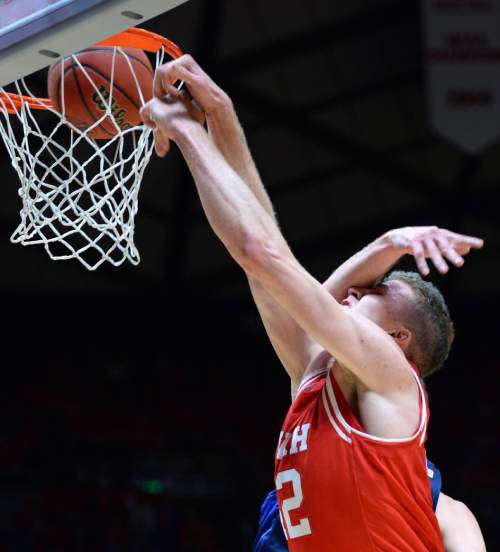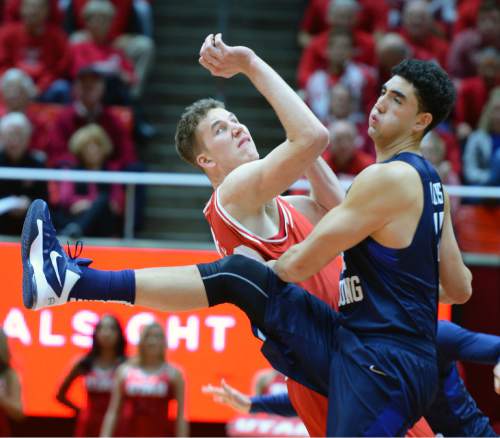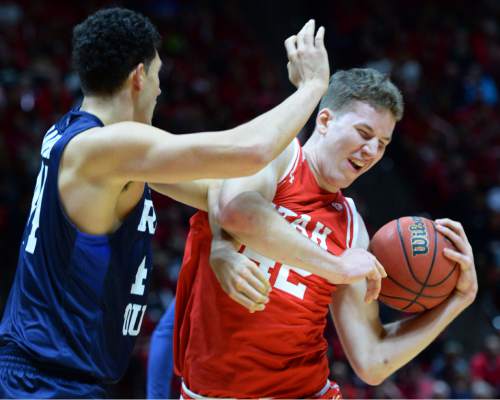This is an archived article that was published on sltrib.com in 2016, and information in the article may be outdated. It is provided only for personal research purposes and may not be reprinted.
I have read several varying responses to the sudden cancellation of the Utah vs. BYU basketball game next fall. After dying down, it now has gained new life in reported airplay at the Utah Legislature ("Legislature to look at U. athletics over BYU rivalry suspension," Feb. 21). Having heard or seen every single one of these games since 1957, and as an emergency physician, I can say the Utes' coaches' decision was medically and socially very well grounded. This isn't about the fans. It's about certain players who on their own and, possibly based on the historic knowledge that their coaches' and school's administration will likely look the other way, are simply acting like "thugs" and have gotten away with mayhem not worthy of even other similar, semi-violent collegiate events.
Nick Emery, on his own and clearly pre-mediated, closed-fist punched Brandon Taylor in the head, not the neck, as was reported by some — and clearly not in a less dangerous part of the body — the arm, leg, back, or butt. He then leaned over Taylor and taunted him, not helped him up, if this was remotely any kind of accident. Sports Illustrated called it a "vicious sucker punch."
A direct, close-fisted blow to the side of the head or face of an unsuspecting victim can kill. Many in our region can recall the vigilante fan who cold-cocked a referee at a kid's soccer game in northern Utah and killed him. It can happen easily in these type of attacks, and the medical result cannot be predicted, and certainly not waved off or excused as happening "in the heat of the moment." That's why direct, intended assault is considered a felony. If I was Brandon Taylor, I would have filed criminal assault charges against Emery. This guy has a history of doing nearly the same thing against several other players, including some historically captured on video as far back as high school. His proclivity to do so, and do it several times before this event was not unknown by his mentors, both coaches and athletic administration. They simply ignored it to the future, predictable peril of others.
Let's remember a couple of incidents well reported in fairly recent times. Several years ago, BYU player Rafael Araujo intentionally elbowed Andrew Bogut, got a flagrant and technical foul, and was tossed out of the game — a punishment which was actually quite lenient for his actual action, which was, again, simply an intended assault on a rival player. No corrective action from the BYU administration's official or athletic leadership was forthcoming. Just the week before, in a game against UNLV, Araujo received a public reprimand from the league for a punch he threw at Rebel guard Jerel Blassingame. A coincidence … or a pattern?
In a non-Cougar-related event any Ute fan during the early '80s will never forget, a huge Colorado State player intentionally elbowed All-American Danny Vranes in the head, causing him to lose consciousness and have a trauma-induced seizure right on center court. Vranes incurred a severe concussion, missed some games, and, when put on anti-seizure medications, was clearly not the same player for the rest of the season. Not exactly "no harm, no foul." These actions are very dangerous to an unsuspecting victim.
This predictable risk has now become "foreseeable," which is a legal term for reasonably knowing something and failing to act, and is likely why the Ute coach, backed by his athletic director, cancelled the potential for any upcoming, repeat performances from historically uncontrolled BYU players. From a safety standpoint, I hope until the "school down south" actually moves to address this issue (maybe with a needed adjustment to their famous Honor Code) that the U. continues this ban.
Jeff Clawson, M.D., is an emergency physician and medical director of the International Academies of Emergency Dispatch in Salt Lake City.







